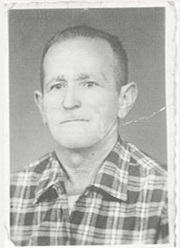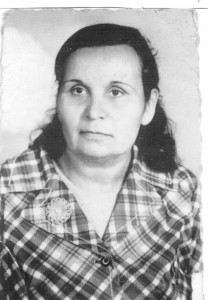Through my blog I want to explain my connection to this investigation and how my family are affected by the Armenian Diaspora. I will also explore and discuss Armenian culture – historically and in the modern day. The following posts explain my own story in terms of the initial steps I took to discover my heritage as well as how my grandfather escaped death in 1915. I never met him but I have been told this story by his son, my father, and other relatives.
For the first 18 years of my life being an Armenian in Britain wasn’t a very conscious part of my being. I grew up in Kent with my Essex born English mother and older sisters who had little desire to seek out their own non-English identity. My Israeli-Armenian father moved out when I was a baby and other than the fortnightly visits to his house, I was pretty oblivious to my foreign baggage.
Growing up, our father would often try to encourage us to visit Israel with him to meet my Armenian family there.
Aged five I visited Israel, meeting my father’s family for the first time, including my grandmother. It would prove to be the first and last time I met her as another 12 years would pass until I visited again.
Returning for a two-week holiday when I was 17 I started to understand my roots a little more.
Before starting university I decided to travel to Israel and the wider Middle East for six months.
During my travels I spent Christmas, New Year and other holidays with my Israeli-Armenian family which had a real impact on me and I began to seriously look into the story of my family. Slowly my surname was becoming more than just an interesting conversation point.
These initial steps have paved the way for me to research my own background and roots. Through this project I hope to further that research and understanding, as well as telling the compelling story of the Armenian diaspora who are littered round the globe in their millions.

Nerses Nerssessian was four when Ottoman troops massacred his family in front of him. One of twelve children, Nerses and his older sister, Anahid were the only survivors. They were just two of thousands of orphans following the events of 1915.
The pair escaped death only because they had visited their Uncle’s house and were returning when they saw their parents and siblings being slaughtered. After fleeing back to their Uncle, who was also later killed, they left the Ancestral homeland of Armenia escorted by Ottoman troops through the Syrian desert in the later named ‘death marches’.
Later in life he told my father:
“People used to die, left, right and centre. We would do anything to survive. Anyone who couldn’t carry on marching they just shot.”
Eventually he ended up in a orphanage in Greece and later Syria. The orphanage held roughly 500 Armenian children and many would die of malaria each day. My grandfather, however had a trick, he would bathe in a warm spring to keep himself healthy.
Ten years after watching their parents die together, aged 19, Anahid left him to travel to the newly formed Armenia Republic. They lost contact and he never saw her again despite attempts to track her down.
As a teenager he trained as a tailor and would travel to Lebanon and Palestine, eventually becoming a master tailor in Haifa. He escaped death once again during the Jewish insurgency in the 1930’s. He left the shop to deliver a suit, as he walked back to the shop it exploded. A Jewish attack on an Arab business, several of his colleagues died.
Following the attack and as Palestine became Israel, he re-trained as a baker. Then in 1951 aged 40, he met my grandmother, a 20 year old Christian Arab born in Nazareth.
They were married shortly after. Seven children followed in the next eleven years. He wanted twelve to replace his brothers and sisters that had been killed in 1915 but my grandmother wouldn’t agree.
Nerses then worked on a farm in Rafat, near Jerusalem. The children were sent to Armenian boarding school in Jerusalem to save money.
A few years before his death they moved back to Haifa and the Arab area of ‘Wadi nissnass’ where the family home remains today.
He died while working as a security guard on a building site in the early hours of the morning.
Of his father, my dad said:
“He was a very well known, kind man. He never had much money, he spent it all on us. He was a loving father and always had sweets in his pocket. I remember he was quite skinny but very strong. And in the winter he would wear a pom pom hat. I think the one thing he taught me is to always be kind.”

